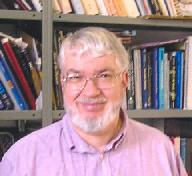
David G. Turner
Professor
Director of Burke-Gaffney ObservatoryB.Sc. (Waterloo, 1968), M.Sc., Ph.D. (Western Ontario, 1970, 1974)
(Photograph by David Richardson, 2004)
Email: turner{"at")ap.mu.ca
Phone: (902) 420-5635
Fax: (902) 420-5141

|
David G. TurnerProfessorDirector of Burke-Gaffney ObservatoryB.Sc. (Waterloo, 1968), M.Sc., Ph.D. (Western Ontario, 1970, 1974) (Photograph by David Richardson, 2004) Email: turner{"at")ap.mu.ca Phone: (902) 420-5635 Fax: (902) 420-5141 |
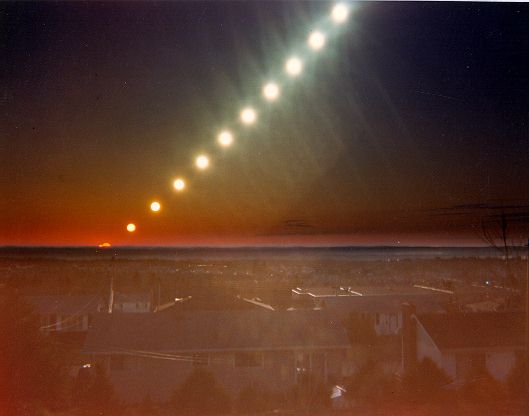
Astronomical phenomena that can be viewed with the unaided eye, such as sunrises, sunsets, auroral displays, planetary conjunctions, first sighting of the thin crescent of the Moon following New Moon (occasionally Ramadan in North America begins as a result of a sighting through my office window), etc. A lot of astronomy can be done without telescopes or binoculars. To view a sample selection of images and drawings, click here. ![]()
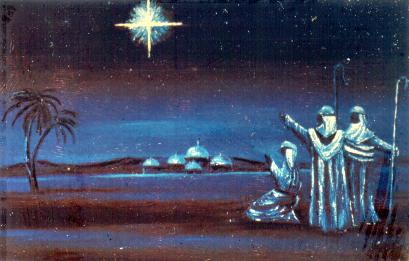
The Star of Bethlehem, a subject in which I became interested during the six years I spent as Director of the Doran Planetarium, Laurentian University, where each year I scripted and produced Christmas Star shows for the general public. The mystery of the Star of Bethlehem is an historical, as well as astronomical, puzzle. To read a fictional article on the Star of Bethlehem that I wrote for the Saint Mary's Maroon and White, click here. ![]()
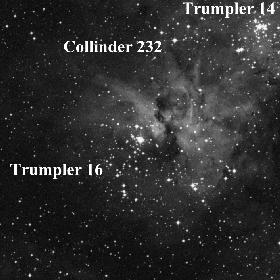
Young to intermediate age open clusters. Most of my research involves very sparse clusters and groups associated with Cepheid variables, but I am also interested in very young clusters that contain Wolf-Rayet stars or pre-main-sequence objects. Steve Shorlin, who recently (1998) completed his M.Sc. thesis under my supervision, searched a field in Carina as part of his thesis research, and discovered a previously undetected young cluster associated with two Wolf-Rayet stars, one of type WN6 and the other of type WC4. It is the first instance of both types of objects being found in the same cluster. To view a sample of open clusters of interest to me, click here. ![]()
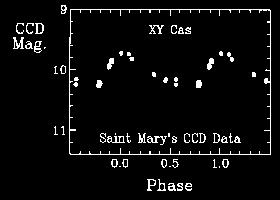
Intrinsic properties of Cepheid variables and the galactic distance scale. Click here for a list of open clusters and groups that contain Cepheids as potential members. In recent years, undergraduate students working with me (Andrew Horsford, Joseph MacMillan, and Stephen Goobie) have observed Cepheids with the CCD camera on the 0.4-m telescope of the Burke-Gaffney Observatory, and have added valuable data on period changes for these stars. The derived period changes primarily reflect stellar evolution through the Cepheid instability strip, but also help to specify the pulsation modes of the stars. For more details on our use of the campus telescope, click here. ![]()
Observable properties of interstellar and circumstellar extinction. Much of my early work focused on the use of the variable-extinction method to derive values for the ratio of total-to-selective extinction, R, in open clusters and associations. Roughly 60 or so open clusters yield fairly normal values of R = 3.1, plus or minus 0.4, but there are a few regions where anomalously large values of R, i.e. 4 or 5, seem to exist.
Galactic structure, when I can find time for it.
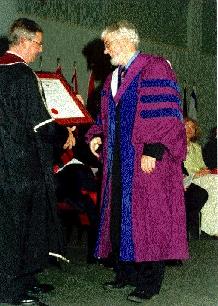

David Turner receives the President's Award for Excellence in Research from University President Dr. Kenneth Ozmon at the 1997 Fall Convocation at Saint Mary's University.
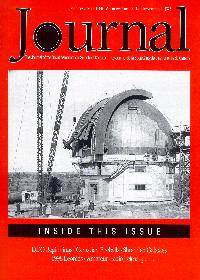
Updated February 25, 1999.